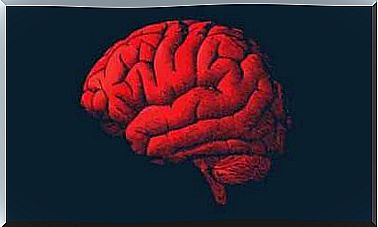Treatment Of GAD And New Perspectives

The new perspectives in the treatment of GAD (generalized anxiety disorder) encompass the essential aspects of cognitive-behavioral therapies. The same are integrated with new generation therapies.
Acceptance and functional analysis are the keys to help the patient take the reins of their life in hand.
Clients / patients with GAD have a higher frequency of interpersonal traumatic events in the past and a fragile bond with their loved one in childhood (relative to the population not affected by the diagnosis).
New perspectives in the treatment of GAD underscore the importance of addressing interpersonal issues with patients. These, in fact, are not fully addressed in current cognitive-behavioral therapies.
Past traumas, in fact, could embody deeper emotional themes. From these GAD patients would shy away through worries. New guidelines have been developed to overcome the limitations of the cognitive-behavioral perspective of GAD.
Thus, we find: Newman’s integrative therapy, Mennin’s emotional regulation therapy and Roemer and Orsillo’s therapy, based on acceptance as a treatment of GAD.
Treatment of GAD: Newman’s integrative therapy
GAD patients not only worry, they also act by increasing the possibility of negative interpersonal consequences. Thus, they avoid that others know how they are and what they feel in order to avoid criticism and feared rejection.
They are also often unable to communicate their wishes and needs. They cannot express anger or disappointment when their emotional needs are not met.
Newman et al. (2004) developed an integrative therapy for the treatment of GAD. The same is implemented sequentially: in a session lasting 2 hours, traditional TCC (cognitive-behavioral therapy) is combined with interpersonal techniques.
The objectives of the interpersonal-experiential section are:
- Detect the patient’s interpersonal needs. In addition to the ways in which he tries to satisfy those needs and the underlying emotional experience.
- Generate more effective interpersonal behaviors. In order to satisfy your needs.
To achieve these goals, experiential therapy techniques are used. The focus is on the emotional avoidance approach.
On the other hand, however, it can only be useful for patients with certain interpersonal problems. Newman’s integrative therapy as a treatment for GAD assumes:
- Identify the patient’s interpersonal needs.
- Help him produce the behaviors necessary to satisfy them.

Treatment of GAD: Mennin’s Emotional Regulatory Therapy
Mennin (2004) developed emotional regulation therapy which is based on the assumption that people with GAD are more prone to experience negative emotions.
Furthermore, it is difficult for them to identify and understand their emotions. At the same time, they view them as negative, do not accept them and cannot manage them.
Emotional regulation therapy integrates aspects of traditional CBT with emotion-centered interventions. These are aimed at emotional regulation deficits. In addition, the patient’s problems are addressed on a social level.
This therapy develops in 4 phases:
- Psychoeducation on GAD. Functional analysis of worries and emotions. Self-registration of concerns.
- The client learns to identify defensive and evasive responses in the face of emotions felt, such as worry and the search for tranquility. In their place, learn to develop somatic knowledge skills. It is also capable of detecting thoughts on problematic core themes. We work on understanding and emotional acceptance. Together with the identification and expression of one’s emotions and needs.
- The skills learned are applied to a series of experiential exercises. The same, in fact, relate to central issues, such as the fear of loss, inadequacy and failure. Such experiential exercises can include techniques such as: the empty chair, the dialogue between two chairs, the imaginative exposure, the descending arrow or the Socratic dialogue.
- Evaluation of the results. End of the therapeutic relationship. Relapse prevention. Future goals external to therapy.
Emotional regulation therapy is superior in controlling a wide variety of aspects: worry, anxiety and depression. Effects range from moderate to large.
Behavioral therapy of Roemer and Orsillo based on acceptance
According to the Roemer and Orsillo model, people with GAD have a problematic relationship with their inner experiences.
Within this component, two aspects are distinguished: the negative reaction to inner experiences and the fusion or over-identification with them.
- The negative reaction includes negative thoughts and meta-emotions (e.g. fear of negative emotions). They make it difficult to observe and accept inner experiences.
- Merging with inner experiences involves judging them much more indicative of what they are in reality. A transient negative thought is thought to be an unmistakable characteristic of the person. This problematic relationship with inner experiences generates experiential avoidance.
Experiential avoidance is the deliberate or automatic evasion of inner experiences. These are perceived as threatening (e.g. worrying about avoiding more disturbing experiences).
Such avoidance would lessen the discomfort, but only temporarily. In fact, it would help preserve the problematic relationship with inner experiences. Furthermore, it would facilitate behavioral restriction. The person engages less in useful or meaningful activities. Or rather, he is less aware of them as he realizes them.
This behavioral restriction increases malaise. With it, more negative experiences are generated and the cycle is perpetuated.
Considering the above, Roemer and Orsillo (2007,2009) proposed acceptance-based behavioral therapy (TCBA).

Aspects of Acceptance-Based Behavior Therapy
- Approaching conscious attention (mindfulness) and acceptance of their experiences. With the behavioral principles of learning and practicing new skills.
- Explanation and demonstration of a GAD model. The aspect of experiential avoidance is emphasized. Finally, this model is linked to the treatment to be followed.
- Different techniques of mindful attention are taught, focusing on breathing. The same focus on sensations and, finally, on emotions and thoughts.
Customers are helped to:
- Break the fusion between self-perception and inner experiences.
- Identify the activities appreciated in one’s life in the interpersonal, work-educational and personal interests fields.
- Live the life they want. Focusing on actions. Regardless of the negative thoughts and feelings that may arise.
Behavioral therapy based on acceptance as a treatment for GAD would produce changes in key variables indicated by other theoretical models:
- Difficulty managing emotions.
- Fear of the emotional response.
- Intolerance of uncertainty.
- Low perceived control.









